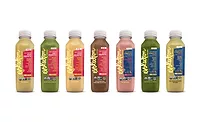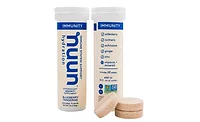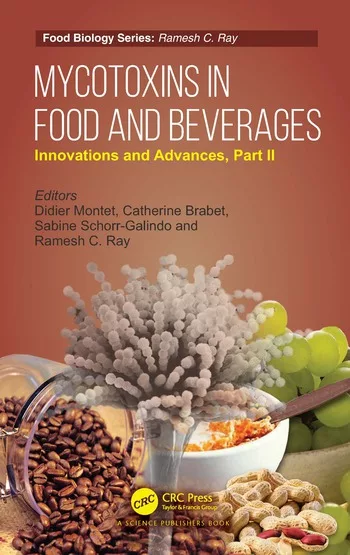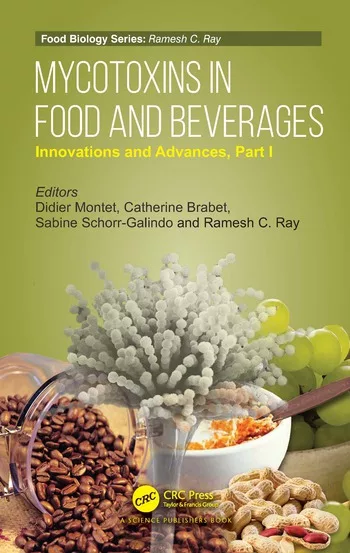Natural, clean-label trends drive upswing in botanicals
Botanicals add flavor complexity to RTD beverages
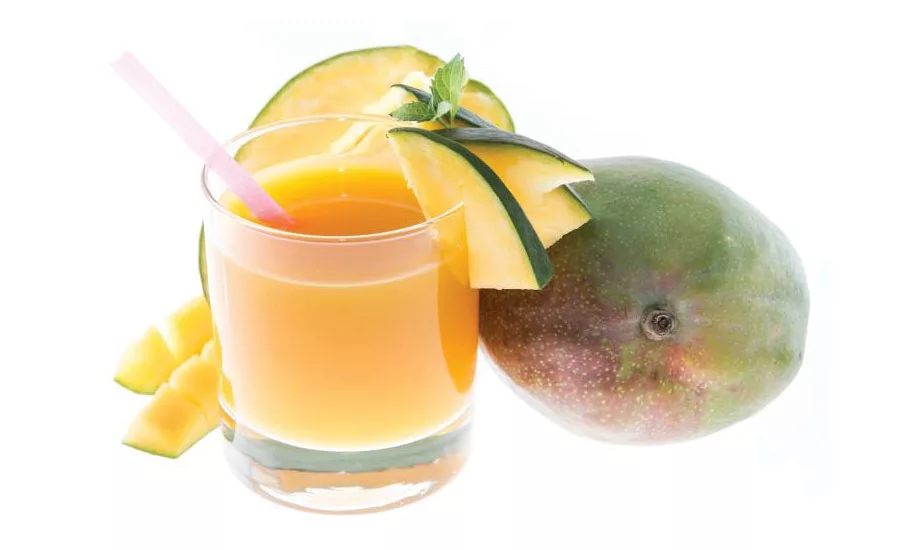

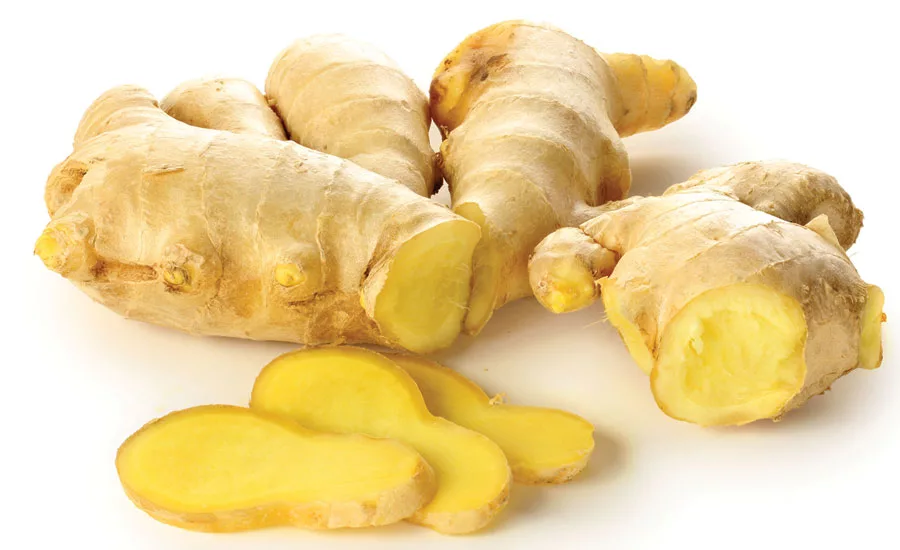
As more consumers take a back-to-nature approach to their health and nutrition, recognizable, plant-based botanical ingredients like green tea, guarana, turmeric, acai, vanilla and ginger are adding functionality, healthy hydration, natural caffeine and clean-label appeal to a variety of beverages.
The clean- and clear-label movement and consumers’ desire to improve their overall health and well-being are driving more interest in plant-based ingredients like botanicals, experts note. Other trends impacting the use of botanicals within beverages include raw, fresh, natural, organic and non-GMO.
“Consumers today are demanding to know more about what’s in the foods and drinks [that] they consume, where they’re from and the purpose they serve,” says Julio R. Lopez Cintron, global business manager for functional extracts at Chicago-based Archer Daniels Midland Co. (ADM). “With that, a growing number of food and beverage companies are looking to botanicals as a great way to boost the nutritional benefits of products naturally while also delivering on a timely consumer trend.”
The growing healthy hydration trend is promoting the use of botanical ingredients as well, particularly as consumers prioritize fresh, clean and sustainable claims, which are becoming the norm for many categories and brands, adds Juliane Guevel, vice president of herbal raw material sales for Martin Bauer Inc., Secaucus, N.J.
“Demand for natural and organic drinks is on the rise,” Guevel explains. “Incorporating botanical ingredients helps create more diverse and interesting flavor profiles that do not rely on sweetness for additional taste. Fruit, herbs and spices are identifiable ingredients well known for providing health-and- wellness benefits and thus ideal for natural formulations.
“There is an increasing trend to use botanical ingredients across the market, from tea and fortified waters to dairy products and juices,” she continues. “Botanicals add great taste combinations and authentic aroma to beverages. They deliver fresh, floral, fruity or spicy scents and provide a broad palette of base profiles to offer consumers new tastes.”
Although botanical ingredients have been in the beverage market for decades, they traditionally were utilized in hot beverage applications via tea bags and are less well known by the majority of consumers, Guevel says. However, consumers’ quest for variety and growth in the ready-to-drink (RTD) tea market is enabling botanicals to “get their foot in the door for the ride they have been waiting for for many years,” she adds.
In addition to herbal and RTD teas, botanical ingredients now are being used in fruit-infused waters and juices, energy drinks, kombucha teas, shots, distilled spirits and flavored-malt beverages.
Energy drinks remain a leading category for botanicals with ingredients like guarana, kola nut and guayusa providing natural caffeine, BI Nutraceuticals’ Vice President of Marketing Randal Kreienbrink says. “Botanicals easily balance with other flavors in carbonated soft drinks, RTD teas and juices,” he says. “Health-and-wellness and sports drinks are using botanicals for antioxidant, protein and fiber claims.”
The Rancho Dominguez, Calif.-based company lists several common botanicals for beverage formulations including green tea, guarana, kola nut, turmeric, yerba mate, tamarind, hibiscus, rose hips, passion flower, acai, blueberry, cranberry, pomegranate, papaya, faba bean, pumpkin seed, acerola, chia and quinoa.
Beverage-makers have an arsenal of botanical ingredients from which to choose as they are derived from herbs, spices, roots, flowers, fruits, leaves, shrubs, vegetables and seeds, adds ADM’s Lopez Cintron.
Flavor and functionality
As more beverage categories are incorporating botanical ingredients, brand owners are recognizing the flavor and function they can provide.
“Beverage manufactures are using botanicals for both flavor, i.e., green tea and cranberry, and nutritional function properties in a blend, like a green drink with antioxidant properties, fiber and protein claims,” Kreienbrink says.
Botanicals often are used in alcohol beverages, according to Al Murphy, vice president of the alcohol division at Mother Murphy’s Flavors, Nashville, Tenn. Juniper berries, coriander, angelica, orris root and cardamom commonly are used in gin, while chamomile, peppermint, ginger and lavender can help differentiate non-alcohol beverages, he says.
To combat the dwindling supply of vanilla beans, many dairy companies and craft brewers are turning to natural vanilla flavors, he adds.
“Natural vanilla flavor replacers have been created at Mother Murphy’s to offer solutions to customers who are using vanilla extract within current beverages,” Murphy says. “I see botanicals and spices being used as ingredients to make the beverage experience different. There is also a health benefit to using botanicals such as fennel and ginseng.”
Ilana Orlofsky, marketing manager at Niles, Ill.-based Imbibe, notes that the health benefits and consumer demand for global flavors also is fueling an upswing in botanical usage within beverages.
“The health benefits that many of these botanicals offer range from reducing inflammation, aiding with digestive health [and] overall pain relief, and many are also rich in antioxidants,” Orlofsky explains. “In addition to the health benefits inherent to them, most botanicals add few, if any, calories and add flavor complexity. The demand for and acceptance of global flavors is also contributing to this growth. Many of the most prominent botanicals of the moment, namely turmeric and ginger, do not have North American origins and allow consumers to, sometimes literally, get a taste of another culture.”
Due to their natural positioning, cold-pressed juices, kombucha teas and cocktails are the Top 3 categories that consistently incorporate botanicals, Orlofsky says. “The bar, similar to the kitchen, is often a birthplace of trends, and botanicals, in particular, often pair well with spirits and add compelling nuances to cocktails,” she says. “Lemonade is also worth mentioning; the versatility of citrus lends itself to being an easy platform to enhance with botanicals. Botanical lemonades that I’ve seen recently include cucumber mint, lavender, carrot ginger and peach ginger.”
Martin Bauer’s Guevel also highlights the natural, not-from-the-laboratory appeal of botanical ingredients and the cornucopia of health-and-wellness benefits they offer to the food and beverage industry.
Among the health benefits she cites are botanicals’ positive effect on energy, immunity, weight control, joint protection, blood circulation, digestion, vitality, blood sugar, blood pressure, oral hygiene and cognition.
“Using botanicals in beverages can contribute to the overall healthiness of an individual on an incremental basis. With more of the botanical used in a product, more of the benefit is realized, and the same in reverse,” she explains. “… Innovations focus on natural alternatives instead of artificially composed beverages in all categories: flavored waters [and] herbal waters (aloe vera, birch, maple, bamboo); carbonated soft drinks (elderflower, ginger, yerba mate); botanical beers (honeybush, lemon myrtle, licorice); [and] cocktails (mint, orange blossoms, hibiscus, elderflowers). … Botanical ingredients offer plenty of options.”
ADM’s Lopez Cintron also highlights the health-and-wellness benefits of botanicals. “Functional extracts, such as tea and superfruit plant-based ingredients, including pomegranates and acai berries are popular for their health-and-wellness benefits. For example, chamomile is well-known for its calming effect.
“Turmeric, a botanical that’s been used in Indian cuisine as a spice for some time, is enjoying strong growth in Western culture for its curative, flavor and color properties,” he continues. “Turmeric is thought to have powerful anti-inflammatory effects and is a very potent antioxidant.”
Moving forward, products with clean labels will continue to resonate in the market, says BI Nutraceuticals’ Kreinebrink. “With the clean-label trends, back to the local fields and the majority of consumers looking for healthy beverages, botanicals have jumped center stage,” he says. “The digital age of food bloggers and lifestyle bloggers and tweeters are all chatting about positive benefits of plant-based ingredients.
“Today, consumer diversity is requiring new flavors, especially in response to an increased immigration population in the USA, looking at flavors that were not as common as in the past,” he continues.
Crafting new solutions
New product development and emerging beverage categories also offer opportunities for botanicals. Mother Murphy’s Murphy notes that craft beverage companies are experimenting with new concepts for alcohol and non-alcohol products.
“Part of the pitch is [to] present ingredients that are new to the average consumer from a beverage standpoint,” he says. “… A lot of folks are using basil paired with other berries or fruits. Fireball has been one of the most successful products in the flavored spirit products utilizing the spice of cinnamon.
“Capsicum and ginger can provide warming and heat sensations,” he continues. “Mint and eucalyptus provide cooling sensations. Vanilla is a smoothing agent. Orris root can smooth and bring together other botanicals within gin.”
Yet, the strong and sometimes bitter flavors of botanical ingredients can cause formulation challenges for beverage-makers, says BI Nutraceuticals’ Kreienbrink. He recommends choosing complementary flavors and ingredients to bring out the best flavor options in a beverage.
“Exotic flavor types and mixes like mango, papaya, green tea, turmeric, ginger, acai and cranberry … provide sharp, unique alternatives to your basic cola or orange fruit juice profiles,” he says.
Martin Bauer’s Guevel notes that the large minimums, long lead times and the risk of pesticide contamination, which can be associated with botanical usage, can be offset by using botanical extracts.
“Botanical extracts can help beverage-makers eliminate the stress of sourcing raw materials, brewing and quality control,” she explains. “While Martin Bauer Inc. offers both botanical raw materials and extracts, we also offer strong infusions, which eliminate the need for beverage-makers to again source and brew the raw materials on their own. The product received will be a fresh-brewed botanical that is ready to add to your application.”
Because botanicals are still growing their presence in the United States, especially in RTD beverages, many botanical ingredients either are stocked or made-to-order overseas, causing growing pains for smaller craft companies, Guevel says.
However, she expects the sourcing challenges to improve, particularly as large companies move toward botanicals. “It will help set the foundation for suppliers to bring in a better variety of botanical ingredients that could be offered at lower minimums and pulled from a USA stock for the smaller craft companies just starting out. Proper forecasting is key to securing raw materials that meet [manufacturing readiness level] (MRLs).
“As the health-and-wellness wave gets bigger, so will the opportunities for botanicals to take on a stronger role in foods and beverages,” she continues. “This will lead to botanicals taking the starring role, rather than settling for a co-star role or, worse yet, as an extra in the background.” BI
Looking for a reprint of this article?
From high-res PDFs to custom plaques, order your copy today!



